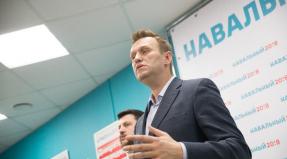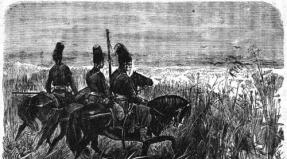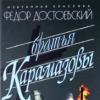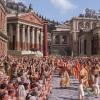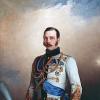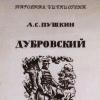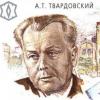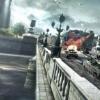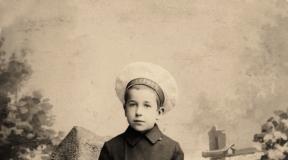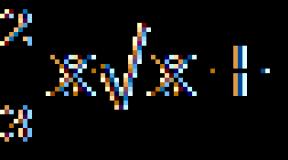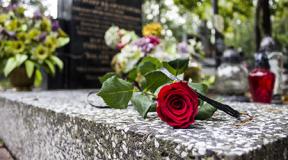Liberation of Eastern European countries from the fascist invaders. Eastern Europe's liberation liberation Eastern
Liberation of the countries of Southeast and Central Europe
Transported by S. V., Volkov V. A.
During 1944-1945 At the final stage of the Great Patriotic War, the Red Army liberated the peoples of Southeast and Central Europe from the totalitarian regimes of their own rulers and the German occupying troops. The Red Army was assisted in the liberation of Romania, Bulgaria, Yugoslavia, Poland, Czechoslovakia, Hungary, Austria and Norway (FinMark Province).
Romania's liberation occurred mainly as a result of the Yaskovine-Chisinau strategic offensive operation. It was held from 20 to 29 August 1944 by the troops of the 2nd and 3rd Ukrainian fronts with the assistance of the Black Sea Fleet forces and the Danube Military Flotilla. The operation participated 91 divisions in the amount of 1 million 315 thousand people. The Red Army as a result of the Sassene-Chisinau operation defeated the main forces of the South Ukraine Army Group, destroyed 22 German and almost all Romanian divisions, located on the Soviet-German front. Moldova was liberated and the Royal Romania was removed from the fascist block.
The losses of the Red Army and Fleet in the Yas-Chisinau operation amounted to 13,200 people killed, 54 thousand wounded and sick. The loss of military equipment amounted to: 75 tanks and self-propelled-artillery plants, 108 guns and mortars, 111 aircraft, 6,200 small arms units. In total, with the liberation of Romania, the Red Army lost about 70,000 people killed.
In the liberation of Bulgaria, the troops of the 3rd Ukrainian Front took part, about 260 thousand people with a number. The Bulgarian army of combat actions against the troops of the Red Army did not led. On September 5, 1944, the Soviet Union broke the diplomatic relations with Bulgaria and announced the state of the war between the USSR and Bulgaria. The Red Army joined the territory of Bulgaria. On September 6, Bulgaria appealed to the Soviet Union asking for a truce. On September 7, Bulgaria decided to break his relations with Germany, and on September 8, 1944 declared the war in Germany. In Sofia, as a result, the September uprising of the people came to power the government of the Patriotic Front. The Red Army in connection with this stopped on September 9 hostilities in Bulgaria.
In Yugoslavia, from September 28 to October 20, 1944, a Belgrade Strategic Offensive Operation was held in the Red Army. It was attended by the troops of the 3rd Ukrainian and 2nd Ukrainian fronts together with the parts of the People's Liberation Army of Yugoslavia and the troops of the Russian Front of Bulgaria. Danube military flotilla also participated in the operation. The total number of troops of the Red Army in the Belgrade operation - 300,000 people. As a result of the Belgrade operation, the Red Army in close cooperation with the partisan army Marshal Tito defeated the Army group "Serbia". The Germans lost 19 divisions, more than 100,000 enemy soldiers and officers were destroyed and captured. On October 20, 1944, Belgrade was released. The front of the German troops on the Balkan Peninsula was overloaded by more than 200 km, the main communication of Thessaloniki-Belgrade is cut, which forced the German command to hastily allocate troops from the south of the Balkan Peninsula on mountain and hard-to-reach roads, which were controlled by Yugoslavian partisans.
The liberation of Poland occurred as a result of the second stage of the Belarusian operation, Lviv-Sandomir, Vorol-Oder and East-Pomeranian strategic offensive operations. From the second half of 1944 to April 1945 The territory of Poland from the German troops was completely cleared. The Red Army defeated most of the troops of the Army Group "Center", the Army Group "Northern Ukraine" and the Army Group "Vistula".
Over 3.5 million people participated in Poland's liberation operations. In the continued over 9 months of battles, about 170 enemy divisions were defeated. With the liberation of Poland, the Red Army and the Polish army lost 265,000 people killed in combat offensive operations, 850,000 people were wounded and patients. The loss of military equipment and weapons amounted to: 5 163 tanks and self-propelled-artillery installations, 4,711 guns and mortars, 2,116 aircraft, 286 thousand small arms units. Freeing Poland, the Red Army and the Polish army came out to Oder and to the coast of the Baltic Sea, creating the conditions for a wide attack on Berlin.
The liberation of Czechoslovakia followed as a result of the East Carpathian, West Carpathian and Prague strategic offensive operations. The East Carpathian operation was conducted from September 8 to October 28, 1944. Participated in the operations of the 4th and 1st Ukrainian fronts in the amount of 33 divisions with 363,000 people. The purpose of the operation was to help the Slovak national uprising and the liberation of the territory of Czechoslovakia. The 1st Czechoslovak Army Corps as part of 15 thousand people took part in the operation. The Red Army defeated the army group of troops of the enemy "Heinritzi", and, overcoming the Carpathians, joined Czechoslovakia. Having touched a significant part of the enemy's troops, the Red Army assisted as Slovak's uprising.
The West Carpathian operation was conducted from January 12 to February 18, 1945. The troops of the 4th and 2nd Ukrainian fronts as part of 60 divisions, a number of 482,000 people. The 1st and 4th Romanian Army and the 1st Czechoslovak Army Corps took part in the operation. As a result of the West Carpathian operation, most of Slovakia and the southern regions of Poland were released.
The final operation of the Red Army in Europe was the Prague strategic offensive operation, which was conducted from 6 to 11 May 1945 by the troops of the 1st, 4th and 2nd Ukrainian fronts, with a number of 151 divisions in the amount of 1 million 770 thousand people. The 2nd Army of Polish Troops took part in the operation. 1st and 4th Romanian Army, 1st Czechoslovak Army Corps with a total number of 260,000 people. During the rapid occurrence of the 1st, 4th and 2nd Ukrainian fronts, Czechoslovakia and its capital Prague was liberated, the 860-thousand group of the enemy's troops was eliminated, which continued resistance after signing the act of surrender to Germany. On May 11, parts of the Red Army met with the advanced parts of the American army.
With the liberation of Czechoslovakia, 122 enemy divisions were defeated, 858,000 people were captured. The troops of the Red Army and their allies on the Soviet-German front lost about 140,000 people killed.
Hungary's liberation was achieved mainly during the Budapest and Vienna Strategic Offensive Operations. Budapest operation was conducted from October 29, 1944 to February 13, 1945 by the troops of the 2nd and 3rd Ukrainian fronts and the Danube military flotilla. As part of the 2nd Ukrainian Front, the 1st and 4th Romanian army acted. In the Budapest operation from the Red Army, 52 divisions participated, with a number of 720 thousand people. As a result, the Budapest operation, Soviet troops liberated the central regions of Hungary and its capital Budapest. A 190 thousand enemy grouping was surrounded and destroyed, more than 138,000 people were captured.
The losses of the Red Army amounted to 80,000 people killed and 240,000 wounded and sick. Losses of military equipment and weapons: 1,766 tanks and self-propelled-artillery installations, 4,127 guns and mortars, 293 aircraft, 135 thousand small arms units,
Hungary was removed from the war on the side of Germany. With the end of Budapest operation, significant forces were released and favorable conditions were created for the development of the offensive in Czechoslovakia and Austria,
The liberation of Austria occurred during the Vienna Strategic Offensive Operation, which was held from March 16 to April 15, 1945 by the troops of the 3rd Ukrainian Front, part of the forces of the 2nd Ukrainian Front and the Danube Military Flotilla. 61 Divisions of the Red Army, 645,000 and the 100-thousand 1st Bulgarian Army, participated in the operation for the liberation of Eastern districts of Austria.
During the rapid offensive, Soviet troops defeated the main forces of the German group of Army "South" and were completely freed from the German troops of Hungary, the southern regions of Czechoslovakia and the eastern part of Austria with its capital Vienna. In Austria, 32 German divisions were defeated, 130,000 people were captured.
The losses of the Red Army and the 1st Bulgarian Army under the liberation of Austria amounted to 41,000 killed, 137,000 wounded and sick. Losses of military equipment and armaments: 603 tanks and self-propelled-artillery installations, 764 guns and mortars, 614 aircraft, 29,000 small arms units.
The successful attack in the Viennese direction and the exit of the troops of the 3rd Ukrainian Front to the eastern regions of Austria accelerated the liberation of Yugoslavia.
The liberation of the northern regions of Norway was achieved as a result of the Petsamo-Kirkenes strategic offensive operation, held from October 7 to 29, 1944. The operation was carried out by the troops of the Karelian Front and the forces of the Northern Fleet, the total number of 133,500 people.
As a result of active hostilities, the troops of the 14th Army in cooperation with the 7th air army and the Northern Fleet in the harsh conditions of the Polar region were defeated by the enemy and liberated the occupied part of the Murmansk region, Petsamo district (Pechengi) and the northern regions of Norway, including the city of Kirkenes . Thus, it was assisted by the Norwegian people and the movement of the Norwegian resistance in the defeat of the remnants of the troops of the German Wehrmacht. As a result of the Petsamo-Kirkenes strategic offensive operation, German troops lost in the area of \u200b\u200bPetsamo and Northern Norway, the 19th Mining and Rifle Corps, with a number of 23,000 people. The losses of the troops of the Red Army and the fleet amounted to 6,084 people killed and 15 149 people were injured.
Mastering the units of the Red Army and the Northern Fleet Petsamo and Kirkenes abruptly limited the actions of the German fleet on the Northern Marine Communications and deprived Germany's supplies of strategically important nickel ore.
List of references
To prepare this work, materials from the site http://www.portal-slovo.ru/ were used
By the summer of 1944, Soviet troops liberated most of the territory of Ukraine. However, almost all Belarus remained norther under the control of the fascists. Thus, the protrusion was formed, which was called the "Belarusian Balcony".
On the territory of the occupied Belarusians were the troops of the Center for the Center for the Center, which at that time were considered the most powerful on the Eastern Front. They commanded General Feldmarshal Buchch, but then he changed Him.
The total number of German troops defended Belarus was 1.2 thousand years. Germans very effectively used complex terrain: numerous rivers, swamps, lakes.
To liberate Belarus, the headquarters developed a plan for Operation "Bagration". Ope following operations:
The defeat of the Army Group "Center"
Liberation of Belarus
Entry into the territory of Poland and the beginning of the liberation of Eastern Europe.
Forces: 1st Baltic Front (General Bagramyan), 3rd Belorussian Front (General Chernyakovsky), 2nd Belarusian Front (General Zakharov), 1st Belorussian Front (Rokossovsky).
The total number of Soviet troops: 2.4 million people The Belarusian partisans were provided to the Soviet troops to the Soviet troops, which were 270 thousand people in the summer of 1944.
Operation "Bagration" began on June 23, 1944. It can be allocated in it. two stages:
1) June 23 - July 4, 1944: At this stage, German troops were surrounded in the Vitebsk area (5 divisions) and in the Bobruisk area (6 divisions). July 3, 1944 liberated Minsk . Eastern Minsk was surrounded by a powerful German grouping with a number of 105 thousand people. 70 thousand Germans died.
2) July 5 - August 29, 1944: Western Belarus and most of Lithuania were liberated. The heavy defeat of the Army Center for the Center for the Center. The troops joined the territory of Eastern Poland, capturing the major city of Lublin. The defeat of the German troops in Belarus, as well as the landing of the Allied Troops in Normandy, contributed to the growth of anti-drug moods among German generals. As a result, Walkiriya was operated, in which Göpner, Admiral Kanaris, and others participated.
By the summer of 1944, Soviet troops were a broad front to the state border of the USSR, creating the conditions for the liberation of the Cure countries.
Romania. She was an active allied in Germany. In the authorities in this country there was a fascist dictator of Ion Antonesska. Romania was of great economic importance to Reich, because there were large oil fields here. For the liberation of Romania, the Sassene-Cinevian operation was carried out. She was carried out by the troops of two Soviet fronts: the 2nd Ukrainian (General Malinovsky), the 3rd Ukrainian Front (Tolbukhin). The Black Sea Fleet under the command of General Oktyabrsky was greatly assisted by the Soviet front. Ope following operations:
Conclusion Romania from the war on the side of fascist Germany
Surroundings and destruction of the Army Group "South Ukraine".
Difficulties:
Availability of powerful Romanian grouping (commanded Colonel-General Frisner)
Geographical factor. On the path of Soviet troops there was a Dniester, Prut and Danube, Carpathians.
The operation began on August 20, 1944 and was successful. Soviet troops with the move overcome two rivers at once. On August 23, the troops of two fronts were connected in the area of \u200b\u200bthe small Romanian town of Khýshi. As a result, 18 of 25 divisions were included in the boiler, which was part of the South Ukraine Army Group. The warehouse of these troops led to an increase in anti-fascist sentiment in Romania. On that day, when the German-Romanian troops were surrounded, an anti-fascist uprising began in Romania, as a result of which Antonescu was overthrown. A new government came to power, which not only announced the yield of Romania from the fascist block, but also declared war in Germany. On August 31, 1944, Soviet troops entered Bucharest. Romania was released.
The results of the Yaskovo-Kishchev surcharge:
Full destruction of the Army Group "South Ukraine". 208 thousand soldiers and officers and 25 German generals took captivity
Romania came out of the war, as a result, Germany lost to Romanian oil, which put the Reich in a difficult position.
Bulgaria. In early September 1944, Soviet troops came out to the border with Bulgaria. Because Bulgaria was the allied in Germany, on September 5, 1944. The Bulgarian ambassador in Moscow was awarded a note about the rupture of diplomatic relations, the USSR declared a war of Bulgaria. On September 8, our troops entered into the territory of Bulgaria, but no resistance from local residents was rendered. Moreover, then there was a coup in Bulgaria, as a result of which the profasciic regime in Bulgaria was overthrown, the government came to power. Patriotic Front. Bulgaria not only came out of the war, but also declared war in Germany. In the subsequent Bulgarian parts actively participated in hostilities in Romania and Hungary.
Yugoslavia. Although the Yugoslav People's Liberation Army, by the beginning of 1944, had more than 200 thousand people., Nevertheless, Yugoslav could not release the country. In Yugoslavia, unlike Bulgaria, there was a large German group called "Serbia", which numbered 150 thousand people. In addition, the Germans supported the detachments of Yugoslav Collaborators: the Albanian Division of the SS "Scanderbec" and the detachments of Croatian Thairs. In such a situation, Tito was forced to seek help in Moscow. In September 1944, Soviet-Yugoslav negotiations took place in Moscow. The main outcome: the USSR promised Yugoslavam to help in the liberation of the country. According to this agreement, Serbs were first to be the first to enter Belgrade.
For the liberation of Yugoslavia, the troops of the 3rd Ukrainian Front and part of the Bulgarian army were sent. In the aggregate, they numbered 650 thousand people. Operation on the liberation of Yugoslavia received the name "Belgrade". The operation was very successful. In mid-October, the Soviet troops came to Belgrade and in the area of \u200b\u200bthe city of Mortar, they surrounded the major German grouping. As a result, 20 thousand prisoners were captured.
Results of the operation:
1) the serious defeat of the Army group "Serbia" is applied
2) liberated eastern Yugoslavia district, including Belgrade
3) German troops in Greece (the Army Group "E") were in an extremely difficult situation, which forced Germany to start their rice conclusion from Greece
Hungary. Soviet troops entered Hungary at the end of October 1944. The situation in this country was significantly different from the situation in Yugoslavia and Bulgaria:
In power in Hungary, there was a protashist regime of Mikoba Hours, who enjoyed broad social support
In Hungary, there was almost no resistance movement.
In addition, Hungary's liberation was still complicated by a whole complex of factors:
Geographical factor. On the way of the Soviet troops there were two major rivers: Danube and Tisa. In addition, the Carpathians were in the northern part of the country
Hostility of a significant part of the local population to the Soviet troops
The presence of powerful German defense in the area. In particular, the "Margarita" line was on the approaches to Budapest.
One of the most significant operations held by the Red Army in 1945 is the assault on Königsberg and the liberation of Eastern Prussia.
Strengthening the Upper Tip Front, Bastion Obereych after surrender /
Strengthening the Upper Tip Front, Bastion Obereych. Courtyard.

The troops of the 10th Tank Corps of the 5th Guards Tank Army of the 2nd Belarusian Front occupy the city of Mülhausen (now the Polish city of Mlynar) during the Mlavsk-Ellbinge operation.

German soldiers and officers taken prisoner during the storming of Königsberg.

The column of German prisoners walks along the street Gindenburg-Strasse in the city of Insterburg (East Prussia), towards the Lutheran Church (now the city of Chernyakhovsk, Lenin Street).



Soviet soldiers transfer the weapons of the dead comrades after the fight in Eastern Prussia.

Soviet soldiers learn to overcome wire barriers.

Soviet officers examine one of the forts in the busy Königsberg.

The machine-gun calculation of MG-42 leads fire in the area of \u200b\u200bthe railway station of Goldap in battles with Soviet troops. 
Courts in the frozen Harbor Pillau (now Baltic Kalinigrad region of Russia), the end of January 1945.

Koenigsberg, District Tragheim after assault, damaged building.

German grenadiers move towards the last Soviet positions in the area of \u200b\u200bthe railway station of Goldap.

Koenigsberg. Barracks Kronprints, Tower.

Koenigsberg, one of the inter-home fortifications.

Aviation Support Ship "Hans Albrecht Vedel" takes refugees in Harbor Pillau.

Advanced German detachments come to the city of Goldap of East Prussia, which was previously occupied by Soviet troops.

Koenigsberg, Panorama of the ruins of the city.
The corpse of the German woman killed by an explosion in Metgethen in East Prussia.

Belonging the 5th Tank Division Tank PZ.KPFW. V ausf. G "Panther" on the street of Goldap.

The German soldier hung on the outskirts of Königsberg for looting. The inscription on the German "Plündern Wird Mit-Dem Tode Bestraft!" Translated as "who will rob - will be executed!"

Soviet soldiers in the German armored personnel carrier SDKFZ 250 on one of Königsberg streets.

The divisions of the German 5th tank division are put forward for counterattack against the Soviet troops. District Cattenau, East Prussia. Ahead of the tank pz.kpfw. V "Panther".


Königsberg, barricades on the street.

The battery of 88-mm anti-aircraft guns is preparing to reflect the Soviet tank attack. Eastern Prussia, mid-February 1945.

German positions on the approaches to Koenigsberg. The inscription reads: "We will pass Königsberg." Propaganda photo.

Soviet SAU ISU-122C leads a fight in Königsberg. 3rd Belorussian Front, April 1945.

German clock on the bridge in the center of Königsberg.

The Soviet motorcyclist passes by the Stug IV and 105-mm Gaubitsa abandoned on the road on the road.

The German landing vessel, evacuating troops from the Highiegenbile boiler, is part of the Harbor Pillau.

Koenigsberg, undermined dot.

Handled German SAU Stug III AUSF. G against the background of the Kronprints Tower, Königsberg.

Königsberg, panorama from the Don Tower.

Koenisberg, April 1945. Royal Castle View

The German assault gun of Stug III hit in Königsberg. In the foreground killed by a German soldier.

German technique on Mittelgheim Street in Königsberg after the assault. On the left and left of the Stug III assault tools, in the background fighter JGDPZ IV tanks.

Upper Top Front, Bastion Urentman. Before the surrender of the fortress, the headquarters of the 367th Infantry Division of the Wehrmacht was located.

On the street port Pillau. The evacuated German soldiers before loading on the vessels throw their weapons and gear.

Abandoned on the outskirts of Königsberg German 88-mm anti-aircraft gun Flak 36/37.

Königsberg, Panorama. Don Tower, Rosgarian Gate.

Koenigsberg, German Dzot in the area of \u200b\u200bHorst Vessel Park.

An unfinished barricade on the Allea of \u200b\u200bthe Duke of Albrecht in Königsberg (now Telman Street).

Königsberg, destroyed by the German Artillery Battery.

German prisoners from the Zakhaimsk gate of Königsberg.

Koenigsberg, German trenches.

German machine-gun calculation at position in Königsberg at the Don Tower.

German refugees on Pillau Street pass by the columns of Soviet SAU SU-76M.

Koenigsberg, Friedrichsburg Gate after the assault.

Koenigsberg, Wrangel Tower, Fortress.

View from the dona tower on the fuzzy (top pond), Koenigsberg.

On Königsberg Street after the assault.

Koenigsberg, Wrangel Tower after surrender.

Efreitor I.A. Gueneev at the post at the border sign in Eastern Prussia.

Soviet division in street battle in Königsberg.

Regulators Sergeant Anya Karavaeva on the way to Königsberg.

Soviet soldiers in the city of Allenstein (currently the city of Olsztyn in Poland) in Eastern Prussia.

Artilleryrs Guard Lieutenant Sofronov fight on Avaider-Alley in Königsberg (now - the alley of bold).

The result of the air strike in German positions in Eastern Prussia.

Soviet fighters lead street fights on the outskirts of Königsberg. 3rd Belorussian Front.

Soviet armor No. 214 in the Königsberg Channel after a fight with German tank.

German prefabricated point of faulty trophy armored vehicles in the Königsberg area.

Evacuation of the remnants of the Division "Great Germany" in the area of \u200b\u200bPillau.

A German technique thrown in Königsberg. In the foreground - 150 mm Maubitz SFH 18.

Koenigsberg. Bridge over fortress ditch to Rosgar Protection. In the background of the Don Tower

Abandoned German 105-mm Gaubita Le.f.h.18 / 40 in position in Königsberg.

The German soldier capes from Saau Stug IV from Saau.

The pz.kpfw gent the gentle tank is burning. V ausf. G "Panther". 3rd Belorussian Front.

The soldiers of the division "Great Germany" are loaded on homemade rafts for crossing the bay of Friesshes-Huff (now Kaliningrad Bay). Balg Peninsula, Cape Calcholz.

Soldiers of the Division "Great Germany" in positions on the Balg Peninsula.

Meeting of Soviet fighters on the border with East Prussia. 3rd Belorussian Front.

The nose of the German transport that is drowning as a result of the attack of the Baltic Fleet aircraft off the coast of Eastern Prussia.

Pilot-Observer Observer-Scout Hensel HS.126 takes pictures of the area during the training flight.

Sided German assault gun Stug IV. Eastern Prussia, February 1945.

Wires of Soviet soldiers from Königsberg.

The Germans inspect the Soviet T-34-85 Soviet tank in the village of Nemmersdorf.

Tank "Panther" from the 5th Tank Division of the Wehrmacht in Goldape.

German soldiers armed with grenade launches "Parcelfaust" next to the MG 151/20 aircraft gun in the infantry version.

The column of German tanks "Panther" moves to the front in Eastern Prussia.

Broken cars on the street taken by the Königsberg storm. In the background, Soviet soldiers.

The troops of the Soviet 10th tank corps and the body of German soldiers on Mülhausen Street.

Soviet sappers walk along the street of burning Insterburg in East Prussia.

Column of Soviet Tanks IS-2 on the road in East Prussia. 1st Belorussian Front.


The Soviet officer examines the German SAU "Jagdepanta" fest in Eastern Prussia.

Soviet soldiers sleep, resting after fighting, right on the street taken by storming Königsberg.

Königsberg, anti-tank barriers.

German refugees with a baby in Koenigsberg.


A short rally in the 8th company after entering the USSR state border.

The group of flights of the Normandy-Neman air team at the Yak-3 fighter in East Prussia.

The sixteen-year-old fighter of the Volkssturma, armed with a gun-machine gun 40. Eastern Prussia.

Construction of defensive structures, Eastern Prussia, mid-July 1944.

Refugees from Koenigsberg are moving toward Pillau, mid-February 1945.

German soldiers on the privera near Pillau.

The German quadstable anti-aircraft installation Flak 38 mounted on a tractor. Fishhausen (now Primorsk), Eastern Prussia.

Peaceful inhabitants and a selected German soldier on Pillau Street during garbage harvesting after graduating from the city.

Boats of the Red Banner Baltic Fleet on repair in Pillau (currently the city of Baltiysk in the Kaliningrad region of Russia).

German auxiliary vessel "Franken" after an attack of stormcuts Il-2 Air Force CBF.

Explosion bombs on the German ship "Franken" as a result of attacking attacks of IL-2 Air Force of the CBF

A break from a heavy projectile in the wall of the bastion wall of the fortifications of the Upper Front of Königsberg.


The bodies of the German two women and three children allegedly killed by Soviet soldiers in the town of Metget in East Prussia in January-February 1945. Propaganda German photo.

Transportation by Soviet 280-mm Mortira BR-5 in Eastern Prussia.

Distribution of food by Soviet fighters in Pillau after the end of battle for the city.

Soviet soldiers pass through the German settlement on the approaches to Königsberg.

Broken German assault gun Stug IV on the streets of Allenstein (now Olsztyn, Poland.)

Soviet infantry with the support of SAU SU-76 attacks German positions in the area of \u200b\u200bKönigsberg.

Column SAU SU-85 on march in Eastern Prussia.

The signpost "highway on Berlin" on one of the roads of East Prussia.

Explosion on the "Society" tanker. The tanker with a combustible cargo was sweeping on March 26, 1945, 30 miles from Liepaja by the aircraft of the 51st Minno-torpedo airlock and the 11th assault air traffic station of the Baltic Fleet Air Force.

Bombardment by aircraft aircraft KBF German transports and port facilities PILLOU.


The German Floa-Plant Bethroaviation Ship (Boeelcke), attacked by the Squadron of the 6th Guards Assault Aviation Aviation Aviation Aviation, the Baltic Fleet Air Force 7.5 km south-east of Cape Hel.

